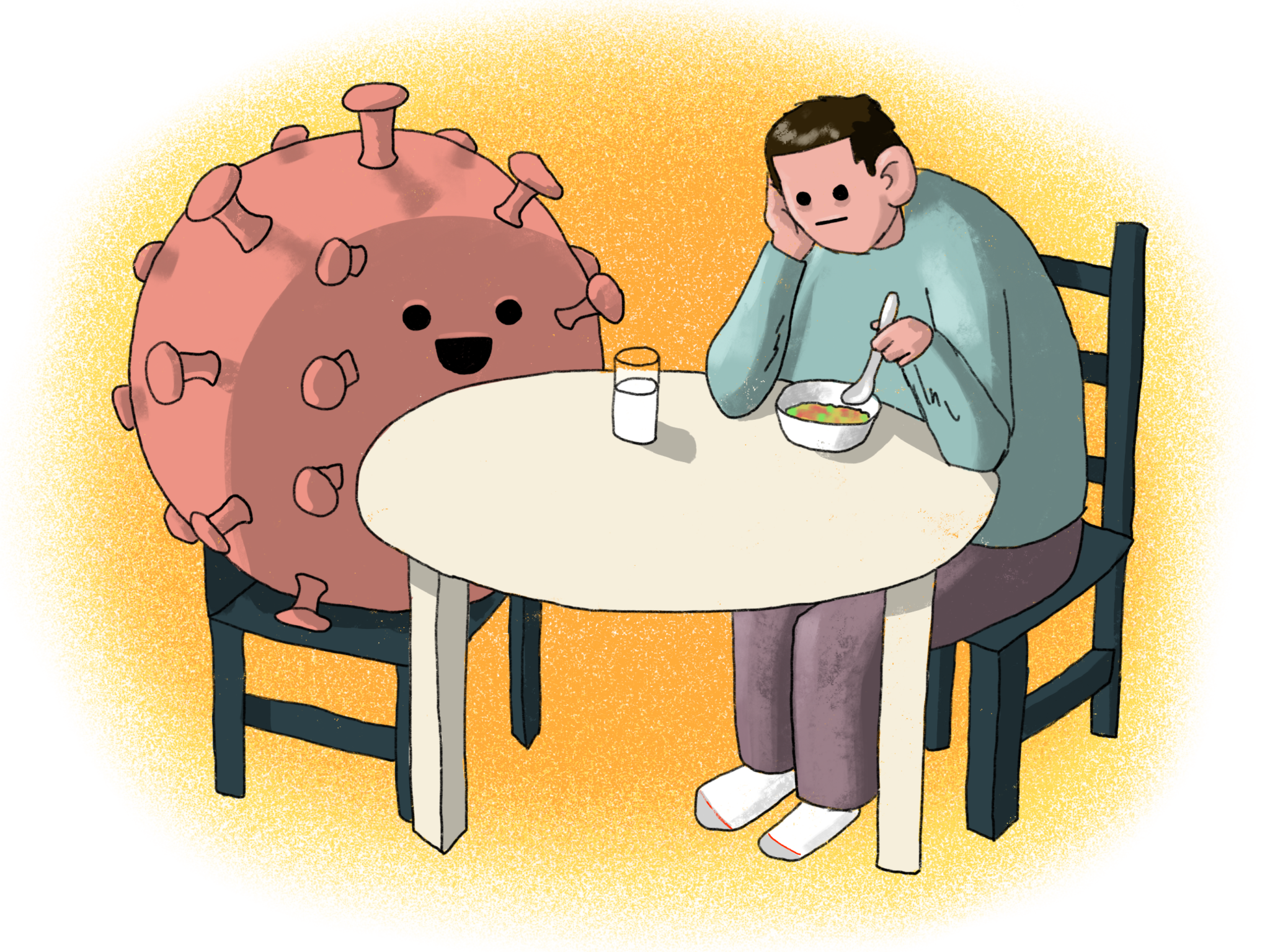

There have been over 35,235 COVID-19 cases in San Mateo County, as of Feb. 8. With the rise of the number of cases, many individuals have reported a wide variety of symptoms and long-term side effects, many of which vary depending on age, previous health conditions and severity of the case. Symptoms can range from mild to severe regardless of age group, and some people who test positive may display no symptoms at all.
English teacher James Daniel contracted COVID-19 in early December 2020, after a family member displayed mild cold-like symptoms.
“[I was surprised] that someone who obeyed all the rules to the best of his ability still could contract it,” Daniel said. “[I was] staying home, always wearing a mask, [using] hand sanitizer, washing hands, only socializing within a constrained bubble.”
While the rest of his household tested negative, Daniel quarantined for 10 days. He is continuing to follow the precautions he used before contracting the virus.
“I told people [that] you really have to obey all the rules all the time,” Daniel said. “Vigilance is super key.”
Similarly, Aragon parent Greg Thornhill contracted COVID-19 in late December 2020, and shortly after his son tested positive after feeling unwell.
“I’d call it flu-like symptoms,” Thornhill said. “[I had] headaches, earaches, bad stomach aches. I lost my sense of smell like most people [and experienced] severe fatigue. [I] definitely had the mind fog. It was tough to concentrate.”
“Just being there for your friends and your colleagues and people that you know [makes all the difference]”
During his quarantine, Thornhill experienced ups and downs in his recovery. With ICU capacity severely limited at the time, the dangers of worsening symptoms could not be more threatening, and with overfilled hospitals, many with COVID-19 are unable to receive proper care.
“Psychologically, you’re constantly worried about … going to the hospital, [and if it is going to] get really bad,” Thornhill said. “[I was] freaking out … [that I was going to] have long-term damage.”
Before testing positive, Thornhill and his family abided by social distancing and health guidelines. Thornhill only left the house to walk his dog and go grocery shopping, and does not know how his household was exposed.
“I took precautions, and I caught [COVID-19],” Thornhill said. “It staggers me that there [are] so many people that still just don’t think [COVID-19] is real. My recommendation to people is take it seriously … [and] have a plan [to] quarantine if you’re a multi-member household.”
Aragon alumna Genesis Loaiza has worked throughout the pandemic as an essential patient care coordinator in San Mateo. She contracted COVID-19 from her workplace, despite not having been in contact with the confirmed positive patient and her colleagues testing negative. At the time, Loaiza’s husband, who is a first responder, was also exposed to COVID-19. He tested positive shortly before Loaiza did, and they self-isolated.
“I left work right away,” Loaiza said. “I got home, and I just sat outside, because I didn’t want to touch anything in my house.”
After testing positive, both began displaying symptoms.
“I lost my sense of smell and my sense of taste,” Loaiza said. “I was really congested for a few days. I had a lot of headaches [and] a low grade fever. I felt sleepy. Luckily [my] symptoms started going away [instead of] getting worse as time went on.”
While at first Loaiza only experienced mild symptoms, the long-term effects of contracting COVID-19 have lingered, as she has had a cough for months now and experiences trouble breathing.
“I’m one of those people that goes off of smell, and I can’t do that anymore”
Despite presenting a series of medical implications, the long-lasting effects have begun to impact her life far beyond just physical health.
“My smell has definitely changed,” Loaiza said. “I love to cook, and I’m one of those people that does not follow the recipe [and] goes off of smell, and I can’t do that anymore. Things smell different. I can’t smell certain things.”
Loaiza and her husband live with their family, and they isolated in their bedroom for 10 days to avoid infecting the rest of their family. Their household tested negative.
“It [goes] to show that masks work, just wear your mask,” Loaiza said. “Practice washing your hands as much as you can, don’t touch your face.”
During isolation, Loaiza’s support system helped them recover and maintain distancing.
“I guess the biggest thing for me is just being there for each other and checking in and doing your part” Loaiza said. “I’m so lucky that I have my family here, but not everybody has family nearby. Just being there for your friends and your colleagues and people that you know [makes all the difference].”
With COVID-19 cases in San Mateo County slowly declining, it is still imperative to abide by guidelines set by the county and the Centers for Disease Control and Prevention for the safety of all San Mateo residents. If sick or exposed to anyone with COVID-19, quarantining is critical in mitigating the spread of the coronavirus and keeping others safe.



